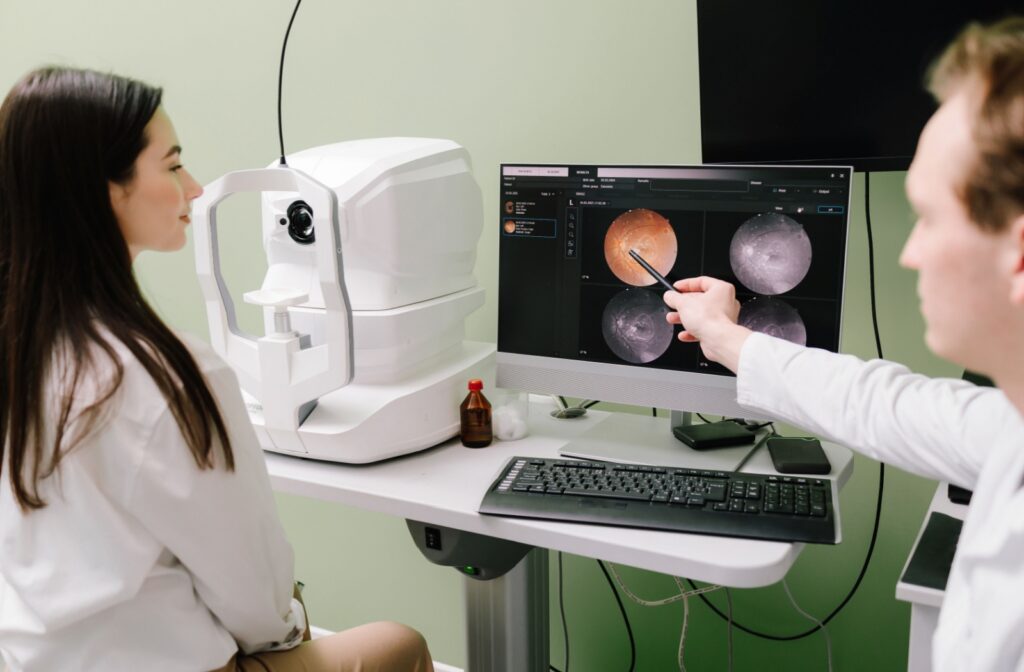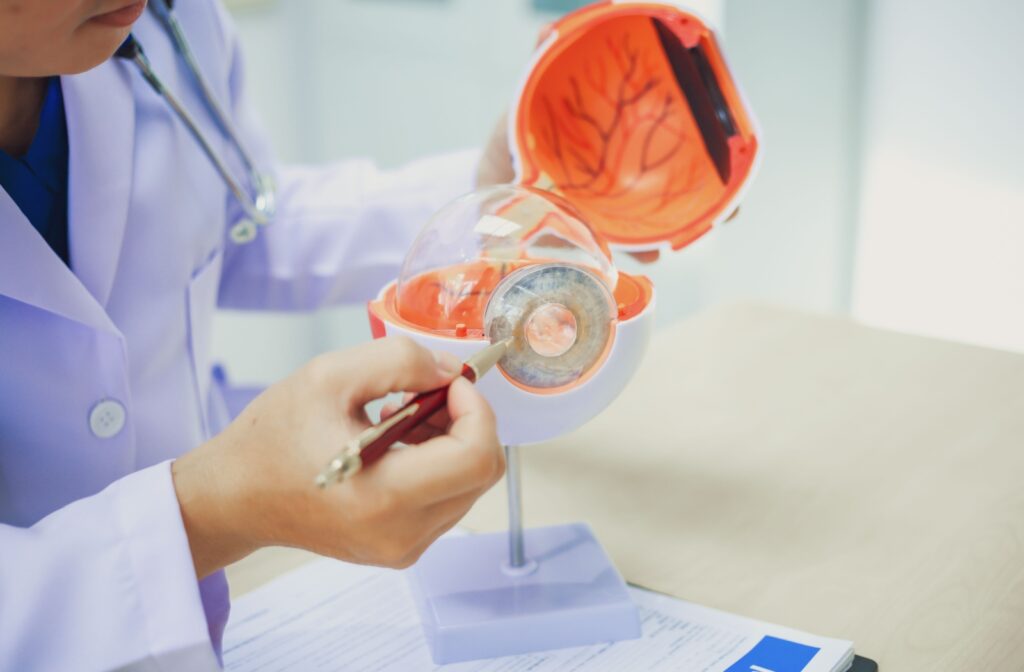Many people think of eye exams as simply a way to update their glasses or contact lens prescription. But did you know your optometrist can sometimes detect signs of diabetes just by looking at your eyes? An eye test can reveal early indicators of diabetes, sometimes before you even notice symptoms elsewhere in your body.
How Are Eyes Connected to Diabetes?
Your body works as a connected system. When something affects your overall health, like diabetes, it can also impact the small, delicate blood vessels in your eyes. This makes the eyes a valuable place to spot early warning signs of disease.
In fact, diabetes-related changes in the retina (the light-sensitive tissue at the back of the eye) can show up even before you experience symptoms like fatigue, excessive thirst, or frequent urination. High blood sugar levels over time can damage the tiny vessels in the eye, and your optometrist may see signs like swelling, bleeding, or abnormal blood vessel growth during a comprehensive exam.
Diabetes & Your Eye Health: What’s at Risk?
Diabetes doesn’t just affect blood sugar, it can lead to serious eye health complications, especially if left unmanaged. These complications include:
- Diabetic Retinopathy: Damaged blood vessels in the retina can leak or become blocked, causing vision loss over time.
- Macular Edema: Swelling in the macula (the center of the retina) can blur your central vision.
- Cataracts: People with diabetes may develop cataracts earlier and faster than those without the condition.
- Glaucoma: Increased eye pressure from diabetes can damage the optic nerve, leading to peripheral vision loss.
What makes these issues particularly concerning is that many of them develop without pain or noticeable symptoms in their early stages. By the time your vision is affected, the condition may already be advanced.
How Routine Eye Exams Can Help Detect Diabetes Early
Comprehensive eye exams aren’t just about vision, they give your optometrist a front-row seat to your overall health. Using advanced diagnostic tools, they can evaluate the blood vessels, tissues, and structures inside your eye for early signs of systemic conditions like diabetes. Here’s how that works:
Retinal Imaging (Optomap)
This ultra-widefield imaging captures up to 80% of your retina in one panoramic image. It allows your eye doctor to see even subtle changes in blood vessels that could suggest the early stages of diabetes.
Optical Coherence Tomography (OCT)
This non-invasive scan uses light waves to create detailed cross-sections of the retina. It helps identify any swelling, fluid buildup, or changes in retinal thickness—often before symptoms are noticeable.
When reviewed together, these tools provide your optometrist with a comprehensive view of your eye health and a clearer picture of any signs pointing to diabetes.
What Is a Diabetic Eye Exam?
If you already have Type 1 or Type 2 diabetes, a diabetic eye exam is an essential part of your yearly health routine. Unlike a standard eye exam, a diabetic eye exam focuses on detecting diabetes-related changes in your vision.
Here’s what you can expect:
- Dilated Pupils: Special eye drops that widen your pupils to allow a better view of the retina. While your vision may be temporarily blurry and sensitive to light, this step is key to catching small issues early.
- Advanced Imaging: Your optometrist may use both retinal photography and OCT to evaluate your eye’s health thoroughly.
- Signs to Look For:
- Tiny bulges in retinal vessels (microaneurysms)
- Bleeding or fluid leakage
- Swelling in the macula
- Abnormal blood vessel growth
- Elevated eye pressure
- Retinal detachment or tears
Even if you feel fine and your vision seems normal, these exams are crucial for catching silent changes that could indicate progression of diabetic eye disease.

Staying Proactive: How to Protect Your Eyes if You Have Diabetes
While staying on top of your blood sugar can reduce risk of complications, it doesn’t eliminate the need for regular eye care:
- Get annual diabetic eye exams: These appointments are tailored to monitor the subtle changes diabetes can cause in your eyes.
- Maintain regular routine eye exams: Even without a diabetes diagnosis, routine visits can uncover early warning signs.
- Stay hydrated and manage your overall health: Good lifestyle habits can protect both your body and your vision.
Why Early Detection Matters
Early diagnosis and treatment of diabetes-related eye conditions can prevent up to 95% of vision loss. That’s why catching the signs through an eye exam is so powerful, it helps you take action before your sight is at risk.
Prioritize Your Vision with Expert Eye Care
Routine eye exams are a critical part of your overall wellness. They can do more than sharpen your vision, they can uncover signs of serious health concerns like diabetes before you even feel symptoms. And if you already have diabetes, specialized eye exams help protect your long-term vision and quality of life.
At Total Vision Rancho Bernardo in San Diego, CA, we’re here to support your eye health at every stage. Whether it’s time for your next routine exam or you need diabetic eye care, our experienced team is ready to help. Schedule your appointment today to take the next step toward clearer, healthier vision.



